Brand icon on the keyboard. How to put a multiplication sign in a Word
Some characters not shown on the keyboard button. It can be such symbols as: double arrows "and", degree sign °, copyright symbol and others.
In order to type characters on the keyboard that are missing, you can use different methods.
The simplest of which is to use the MS Word text editor or Excel spreadsheet from the Office suite.
To do this, just enter it and select the Insert tab
and then either leave it as it is, or copy it to another program.
Second way- this is to use special utility on Windows called table of symbols and you can find it:
Start - All Programs - Accessories - Utilities
and then at the very end of the list

This window will appear, in which all the characters from the various fonts installed on the system are present:

After you select the desired symbol from the table (by clicking LMB on it) (1), you need to click on the button Select(2) and it will appear at the bottom in the field "To copy:" (3), then press the button Copy(4) and the desired symbol will be saved in the clipboard for its subsequent insertion wherever you need.
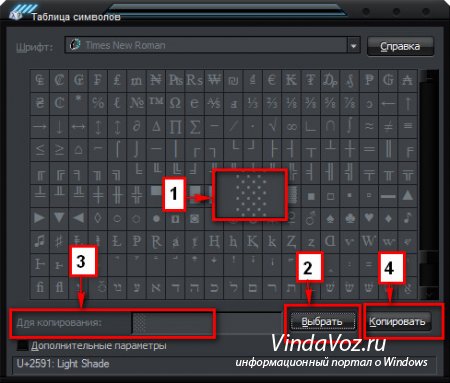
Small addition.
In order not to search for a specific type of characters, you can put a grouping.
For example, I want only Symbols and Signs to be displayed.
1) Check the box "Additional parameters"
2) Character set - Unicode
3) Grouping - Unicode Ranges
4) A window will appear with a choice of Grouping, in which we select "Symbols and icons"
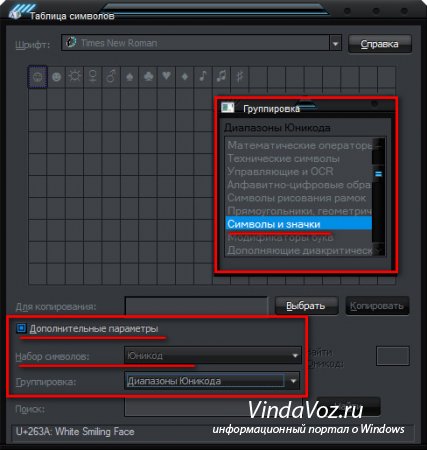
Here, now there are only symbols and icons in the table. Of course, if you want not symbols, but arrows, mathematical operators, punctuation, etc. - then put this filter in the grouping.
The third way is for the lazy.
The fact is that in Windows there are special keys for quick insert these very symbols, for example:
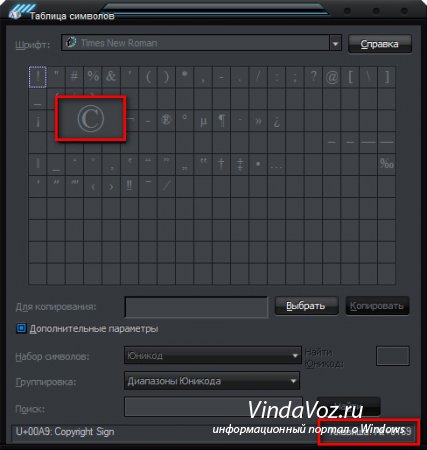
only these hotkeys are used not for every icon, but for some.
| Alt + 0167 | § paragraph | Alt + 0176 | ° degree |
| Alt + 0169 | copyright sign | Alt + 0137 | ‰ ppm sign |
| Alt + 0153 | ™ sign brand | Alt + 0177 | ± plus or minus |
| Alt + 0215 | × multiplication sign | ????? Alt + 0247 | ÷ division sign |
| Alt + 0126 | ~ tilde | Alt + 0136 | € euro sign |
| Alt + 0174 | ® Registered | Alt + 0167 | § paragraph |
| Alt + 0171 | « open quotes | Alt + 0187 | » closed quotes |

Here is an important note: in order to insert a character that is not on the keyboard, you need to hold down the key Alt and then press the 4 digits after the plus sign on digital block keyboard. Of course, you must have enabled Num lock for this block to work.
Also, if it does not work, then try with English layout keyboard.
Of course, this is not the entire list, this is just for information.
Especially for visitors to my site, I have selected a small list that includes not only the above symbols, but also many others. And for convenience, I made it in a simple Notepad and packed it into an archive.
Well, for the very lazy, a small selection - just copy and paste.
Emoticons
☺ ☻ ☹ ㋛
ソ ッ ヅ ツ ゾ シ ジ ت ټ 〠
͡๏̯͡๏ ͡๏̮͡๏ ٩(̾●̮̃̾͡.̃̾)۶ ٩(̾●̮̮̃̾.̃̾)۶ (.̪●) 鸒
Arrows
▲ △ ▷ ▼ ∇ ▽ ◀ ◁
↔ ↕ ← ↖ ↗ → ↘ ↓ ↙ ⇦ ⇧ ⇨ ⇩⇐ ⇑
⇒ ⇓ ⇔ ⇕ ⇖ ⇗ ⇘ ⇙ ⇚ ⇛ ⇄ ⇅ ⇆ ⇇ ⇈ ⇉ ⇊
↰ ↱ ↲ ↳ ↴ ↵ ↶ ↷ ➜ ➡ ➨
———————————————————————————————-
Signs
Attention! You do not have permission to view hidden text.
When you need to put the multiplication sign in MS Word, most users choose the wrong one. correct solution... Someone puts “*”, and someone acts even more radically, putting the usual letter “x”. Both options are fundamentally wrong, although they can "ride" in some situations. If you are typing examples, equations, mathematical formulas in Word, be sure to put the correct multiplication sign.
Probably, many still remember from school that in different literature one can come across different designations of the multiplication sign. It can be a period, or it can be the so-called letter "x", with the only difference that both of these characters must be in the middle of the line and certainly be less than the main register. In this article we will talk about how to put the multiply sign in the Word, each of its designations.
You probably know that the Word has a fairly large set of non-keyboard characters and symbols, which in many cases can be very useful. We have already written about the peculiarities of working with this section of the program, and we will also look for the multiplication sign in the form of a dot there.
Inserting a symbol via the Symbol menu
1. Click in the place of the document where you want to put the multiplication sign in the form of a dot, and go to the tab "Insert".
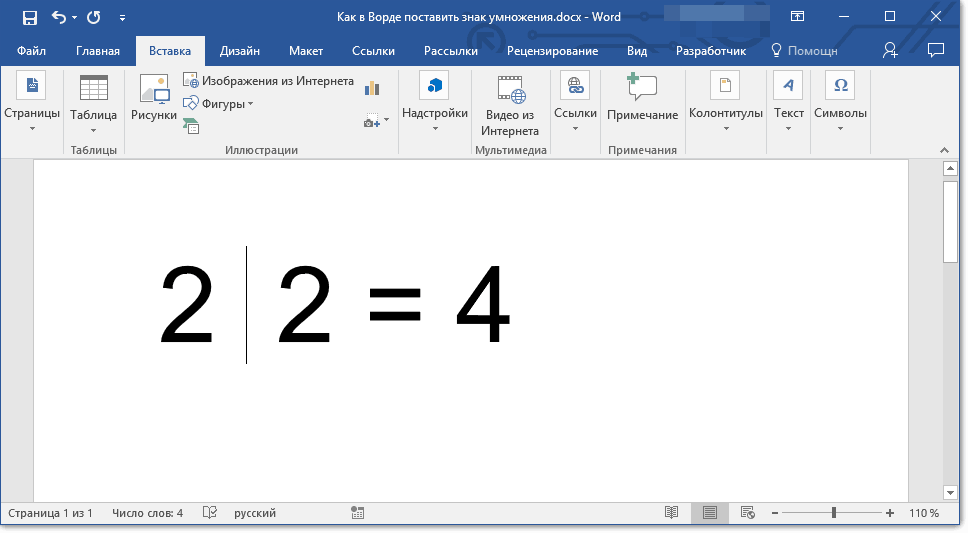
Note: There must be a space between the digit (number) and the multiplication sign, and there must also be a space after the sign, before the next digit (number). Alternatively, you can immediately write the numbers that need to be multiplied, and immediately put two spaces between them. The multiplication sign will be added directly between these spaces.
2. Open the dialog box "Symbol"... For this in the group "Symbols" press the button "Symbol", and then select "Other Symbols".
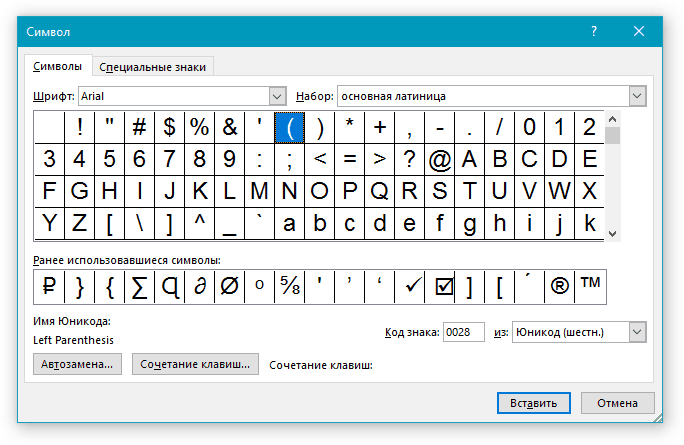
3. In the dropdown menu "Kit" select item "Mathematical operators".

4. In the changed list of symbols, find the multiplication sign in the form of a dot, click on it and press "Insert"... Close the window.

5. The multiplication sign in the form of a dot will be added at the location you specified.
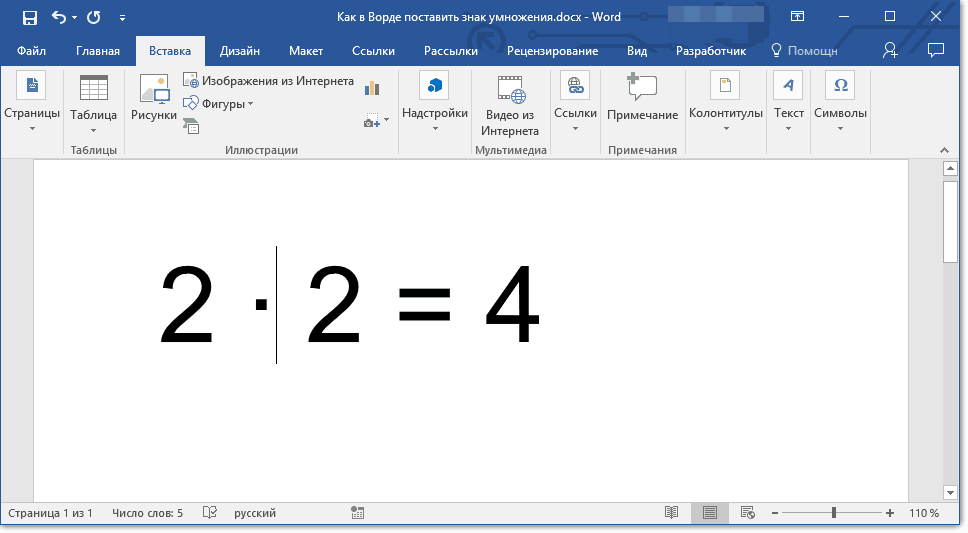
Insert a character using code
Every sign presented in the window "Symbol", has its own code. Actually, it is in this dialog box that you can see which code has a multiplication sign in the form of a dot. There you can also see a key combination that will help convert the entered code into a sign.

1. Position the cursor where you want the multiplication point to be.
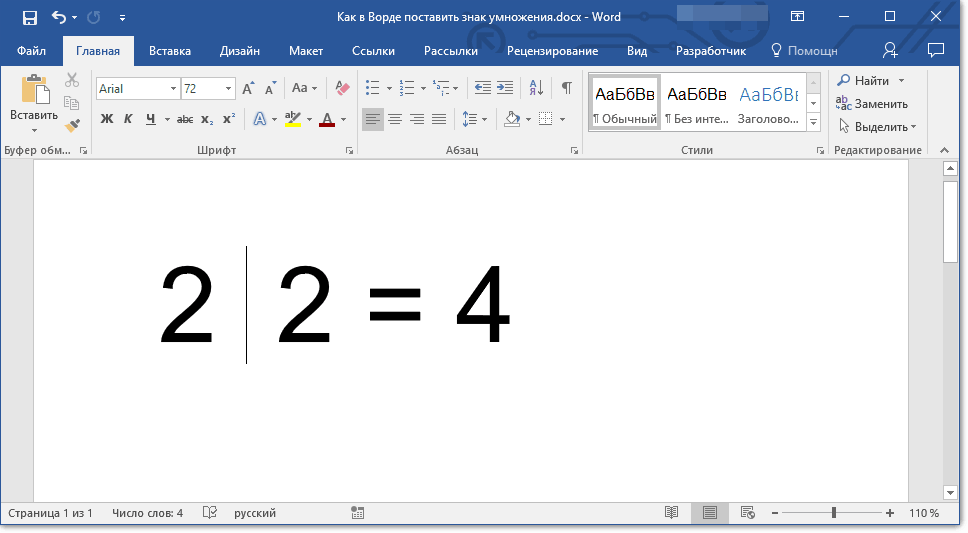
2. Enter the code “2219” without quotes.

3. Click "ALT + X".
4. The numbers you entered will be replaced by a multiplication sign in the form of a dot.

Adding the multiplication sign in the form of the letter "x"
The situation with the addition of the multiplication sign, represented in the form of a kind of cross or, more closely, a reduced letter "x", is somewhat more complicated. In the "Symbol" window in the "Math Operators" set, as well as in other sets, you will not find it. And yet, you can add this sign using a special code and one more key.
1. Place the cursor where the multiplication cross should be. Switch to English layout.
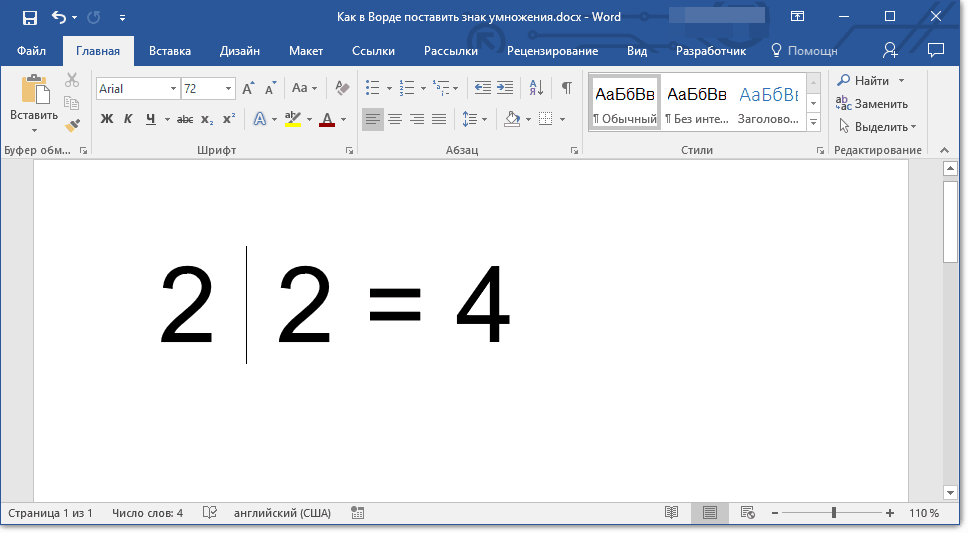
2. Press the key "ALT" and enter the code “0215” without quotes.
Note: As long as you hold the key "ALT" and enter numbers, they are not displayed in the line - this is how it should be.
3. Release the key "ALT", at this place there will be a multiplication sign in the form of the letter “x”, located in the middle of the line, as we are used to seeing it in books.
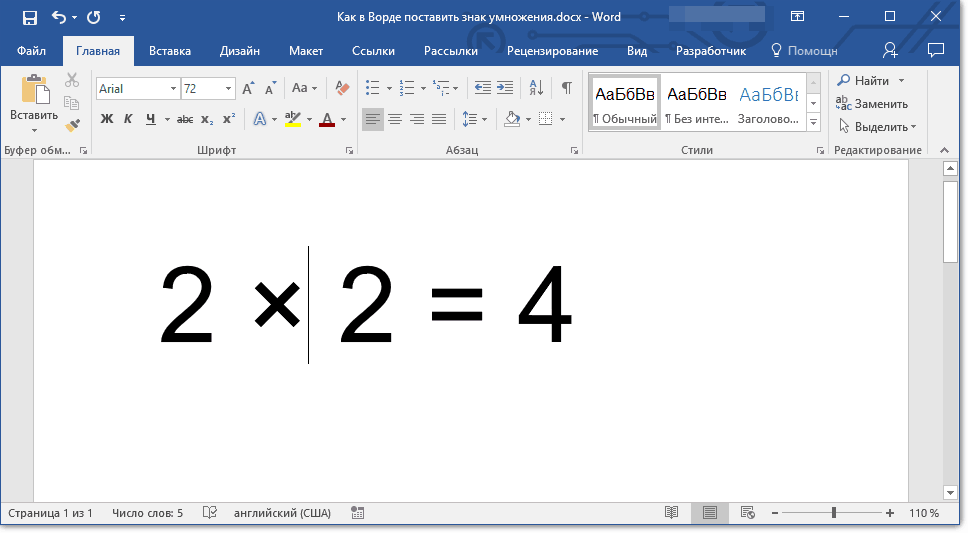
That, in fact, is all, from this short article you learned how to put the multiplication sign in Word, be it a dot or a diagonal cross (the letter "x"). Master the new possibilities of Word and use the full potential of this program.
Many of us repeatedly needed to insert into a document or message any character that was not on the keyboard. For experienced user this is a trivial task, but for all its simplicity, it can be confusing for a beginner. Indeed, upon closer examination, it turns out that there are not so many keys on the keyboard, and there are many more symbols - these are not only numbers, letters and punctuation or mathematics. In addition to them, there are also icons of national currencies, various physical quantities, etc. And from time to time the task arises to introduce any of them into the text of the document.
In Windows, this problem was solved quite simply by assigning a unique code to each character, which can be entered using the key Alt.
To get a preliminary look at the list of all existing characters and their codes, we need to open the Table of Symbols. To do this, go to the menu Start => All Programs => Standard => Utilities => Symbol Table.
A small window will open with a table showing all the characters in Unicode.
Unicode is an international character encoding standard that allows characters to be represented in virtually all written languages. Initially, it was created specifically to bring a large number of variegated systems to a single form, and, accordingly, to eliminate all errors associated with encodings.
Select the font at the top of the drop-down list for which we need to find the symbol. Further, if we are working with a document in Russian, then it is best for us to bring the table to a form that is convenient for us. To do this, put a tick next to the option “ Additional viewing options", After which, in the fields that open, open the drop-down menu and select the set of characters we need - Windows: Cyrillic.
There are a lot of symbols in the table, and sometimes it is not easy to find the one you need. You can make the search process much easier for yourself by filtering characters by groups. To do this, we will use the field Grouping... A small window will appear listing the various sections. For example, we need a euro icon. Euro is a monetary unit, so in groups we just select Monetary units.

After the desired symbol is selected, its code appears in the lower right corner. In our example, for the euro icon ( € ) this will be the code Alt + 0136... Therefore, we pressing the key Alt and without releasing it, turn on the additional numeric keypad(right) with the key NumLock(sometimes it turns on automatically even when Windows starts) and type on it 0136 ... Then we release Alt... And the symbol appears at the place of the document where the cursor was.
Sometimes the additional numeric keypad does not need to be turned on, and the code can be entered on the main one, located above the letters. But this does not always work and not on all systems. Try it on yours. Also, on most laptops additional numbers none at all. Sometimes they are turned on with the help of special combinations, but more often they are not. In all these cases, character entry can be done in a slightly different way. All in the same symbol table, after selecting the desired one, press the button Select, and then - Copy... The symbol we need is copied to the Windows clipboard. We put the cursor in the place of the document where we want to insert the symbol and press the combination Ctrl + V(or select the command from the menu Insert). Everything, the right symbol in the right place.
Of course, the operation will seem time-consuming to many, but if you are proficient, then entering special characters will not be difficult for you. In addition, these operations are usually not required very often. And you can make your task a little easier - for example, by compiling and printing on a printer a small table with the character codes that you use most often. For example:
| Symbol | Code | Description |
| § | Alt + 0167 | Paragraph |
| ® | Alt + 0174 | Registered trade mark |
| Alt + 0169 | Copyright sign | |
| « | Alt + 0171 | Left double angle bracket (herringbone) |
| » | Alt + 0187 | Right double angle bracket (herringbone) |
| — | Alt + 0151 | Dash |
| € | Alt + 0136 | Euro sign |
You can also create a shortcut to the Symbol Table and place it on the Desktop or Panel quick launch, or pin it to the Start menu so that it is always at hand.
If you need to enter such characters often enough, then it is best to attend to the search special program for these purposes. You can find a sufficient number of them on Google, however, almost all of them are paid, although they are usually not very expensive.
It should also be borne in mind that in some text editors Not all Special symbols entered correctly.
 Wireless Charging Smartphones A5 Supports Wireless Charging
Wireless Charging Smartphones A5 Supports Wireless Charging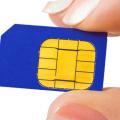 Why do not MTS sms come to the phone?
Why do not MTS sms come to the phone? Why do you need a full factory reset on Android or how to return Android to factory settings
Why do you need a full factory reset on Android or how to return Android to factory settings